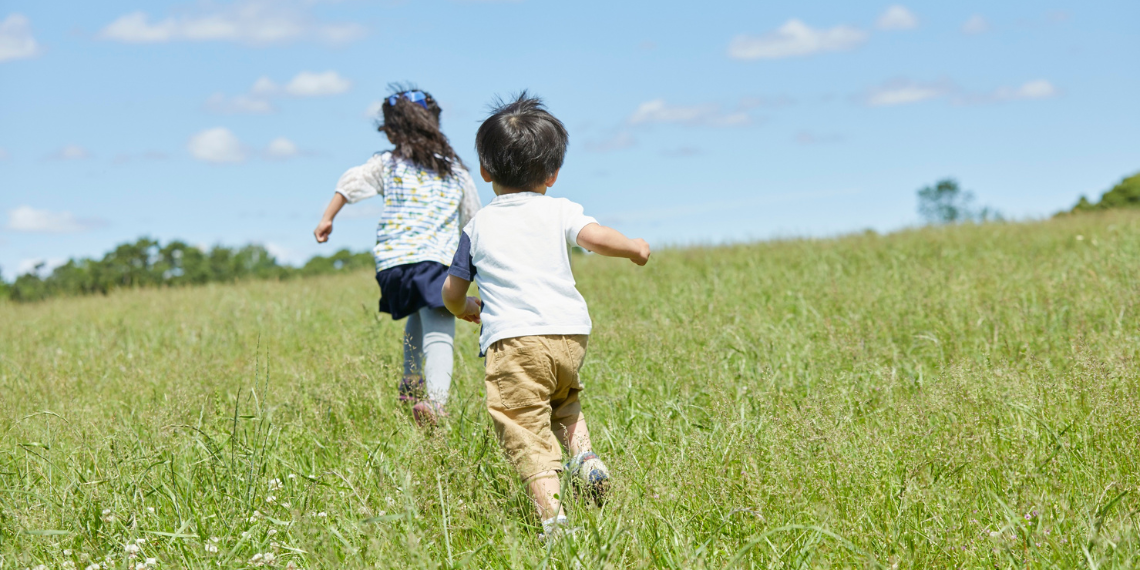Counting Steps and Catching Zzzs: Do Kids’ Movements Measure Up?

When it comes to raising healthy kids, most parents know the basics: eat your veggies, get enough sleep, and go outside to play. But how do we really know if children are moving enough — and what’s the best way to measure it?
Hannah Coyle-Asbil, a PhD candidate in the Department of Human Health Sciences set out to answer that question in a study published in Journal of Science and Medicine in Sport. Working with Dr. Lori Ann Vallis, a professor of biomechanics, Coyle-Asbil took a closer look at how toddlers, preschoolers, and school-aged children are doing when it comes to meeting national movement behaviour guidelines. The study revealed not only important insights about how kids are spending their time, but also how some of the tools used to track kids’ movement may be falling short.
Coyle-Asbil’s interest in children’s movement began during her undergraduate studies, when a biomechanics course with Vallis sparked a fascination with how physical activity impacts development and long-term health. That curiosity eventually led her to do a PhD with Vallis and the Guelph Family Health Study, a long-term cohort study that aims to prevent the development of obesity and promote healthy habits in families with young children.
“I’ve always been interested in how we can improve the health of young Canadians,” she says. “And with all the changes in lifestyle in recent years — especially with more screen time and less outdoor play — I think it’s important to check in and see how kids are really doing.”
The study had two main goals: first, to find out how many children are meeting the 24-hour movement guidelines related to physical activity, screen time, and sleep; and second, to compare how different measurement techniques — especially for sleep — might affect those findings.
The researchers made some interesting discoveries. First, the good news: most children met physical activity guidelines recommending 60 to 180 minutes per day, depending on age group. But when it comes to screen time, only two-thirds of toddlers and school-aged kids were at or below their recommended limits (one or two hours a day, respectively). Preschoolers fared even lower, with less than half meeting their one hour a day guideline.
While not all screen time is created equal (for example, interactive screen time such as educational e-books, games, and other apps can have a positive effect on development), the findings highlight that there’s still work to be done in finding effective ways to reduce screen time.
“It’s a widespread challenge, given how increasingly technological society has become,” says Coyle-Asbil.
Another important finding was a rather large variability in sleep time. For example, compliance with sleep recommendations ranged from three to 83 per cent in toddlers depending on the measurement technique.
“That’s a huge range,” says Coyle-Asbil, noting that this wide range of compliance is common in research involving kids, and really comes down to how the data is collected.
The study used accelerometers — wearable devices that track movement — to estimate how long children were asleep. But the devices can’t always tell the difference between a child napping and one quietly watching TV.
“To an accelerometer, taking a nap and sitting on the couch watching TV look very similar. But the health benefits of these two activities are very different”.
Naps are widely viewed as necessary for healthy development in young children. But the difficulty in measuring daytime sleep — especially since nap times aren’t usually predictable — makes it challenging to accurately assess sleep time in younger kids.
To compensate, the team used average nap durations from previous studies and parental reports to adjust their data. Coyle-Asbil believes findings from her work support an approach that combines objective tools like accelerometers with parent-reported sleep diaries, when available.
“This is an important measurement that would really benefit from standardization,” she says.
At the end of the day, what should parents take away from this research?
“First, just being aware of the guidelines is important,” says Coyle-Asbil. “They were developed with input from researchers, policy makers, and even parents, and they’re meant to support healthy development.”
But, she stresses, the goal isn’t perfection.
“There’s already so much pressure on parents. We don’t want this to be another stressor. If one day is more sedentary, you can try to be more active the next. It’s about balance.”
Fortunately, focusing on one healthy habit — like getting more physical activity — can often lead to improvements in others, like sleep.
For Coyle-Asbil and her colleagues, the study offers exciting opportunities to build on the results. As children in the Guelph Family Health Study grow, researchers will be able to track how early habits influence health outcomes in adolescence and beyond.
“There’s so much more we can explore,” says Coyle-Asbil. “How do these behaviours change over time? Are there differences between boys and girls? Does the intervention actually help families build healthier habits?”
For now, she’s grateful to the families who’ve made this research possible.
“It’s a big commitment to participate in a study like this,” she says. “But it’s helping us understand what’s really going on in our communities — and how we can support healthier futures for our kids.”
Read the full article in the Journal of Science and Medicine in Sport.
Read about other CBS Research Highlights.
